Sasan Matinfar
BioSonix: Can Physics-Based Sonification Perceptualize Tissue Deformations From Tool Interactions?
Aug 20, 2025Abstract:Perceptualizing tool interactions with deformable structures in surgical procedures remains challenging, as unimodal visualization techniques often fail to capture the complexity of these interactions due to constraints such as occlusion and limited depth perception. This paper presents a novel approach to augment tool navigation in mixed reality environments by providing auditory representations of tool-tissue dynamics, particularly for interactions with soft tissue. BioSonix, a physics-informed design framework, utilizes tissue displacements in 3D space to compute excitation forces for a sound model encoding tissue properties such as stiffness and density. Biomechanical simulations were employed to model particle displacements resulting from tool-tissue interactions, establishing a robust foundation for the method. An optimization approach was used to define configurations for capturing diverse interaction scenarios with varying tool trajectories. Experiments were conducted to validate the accuracy of the sound-displacement mappings. Additionally, two user studies were performed: the first involved two clinical professionals (a neuroradiologist and a cardiologist), who confirmed the method's impact and achieved high task accuracy; the second included 22 biomedical experts, who demonstrated high discrimination accuracy in tissue differentiation and targeting tasks. The results revealed a strong correlation between tool-tissue dynamics and their corresponding auditory profiles, highlighting the potential of these sound representations to enhance the intuitive understanding of complex interactions.
* V. Ruozzi and S. Matinfar contributed equally to this work
A Framework for Multimodal Medical Image Interaction
Jul 09, 2024
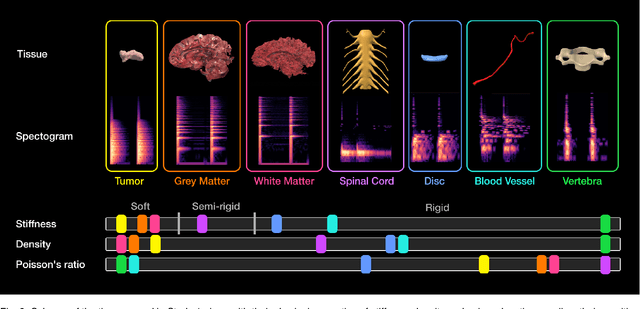
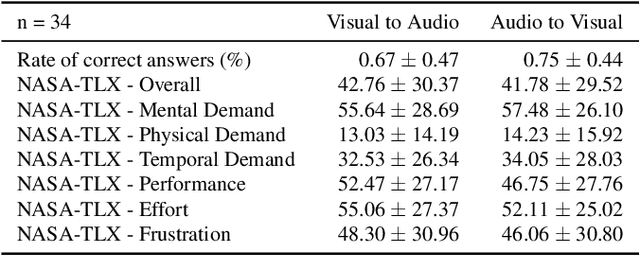
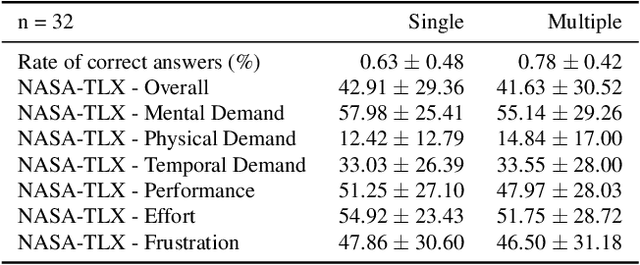
Abstract:Medical doctors rely on images of the human anatomy, such as magnetic resonance imaging (MRI), to localize regions of interest in the patient during diagnosis and treatment. Despite advances in medical imaging technology, the information conveyance remains unimodal. This visual representation fails to capture the complexity of the real, multisensory interaction with human tissue. However, perceiving multimodal information about the patient's anatomy and disease in real-time is critical for the success of medical procedures and patient outcome. We introduce a Multimodal Medical Image Interaction (MMII) framework to allow medical experts a dynamic, audiovisual interaction with human tissue in three-dimensional space. In a virtual reality environment, the user receives physically informed audiovisual feedback to improve the spatial perception of anatomical structures. MMII uses a model-based sonification approach to generate sounds derived from the geometry and physical properties of tissue, thereby eliminating the need for hand-crafted sound design. Two user studies involving 34 general and nine clinical experts were conducted to evaluate the proposed interaction framework's learnability, usability, and accuracy. Our results showed excellent learnability of audiovisual correspondence as the rate of correct associations significantly improved (p < 0.001) over the course of the study. MMII resulted in superior brain tumor localization accuracy (p < 0.05) compared to conventional medical image interaction. Our findings substantiate the potential of this novel framework to enhance interaction with medical images, for example, during surgical procedures where immediate and precise feedback is needed.
Sonification as a Reliable Alternative to Conventional Visual Surgical Navigation
Jun 30, 2022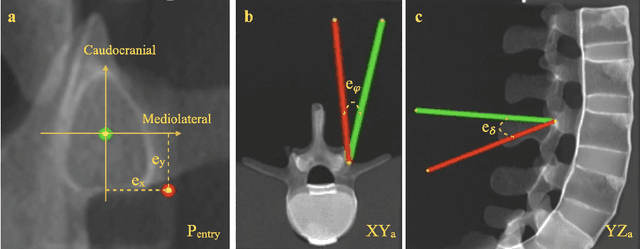


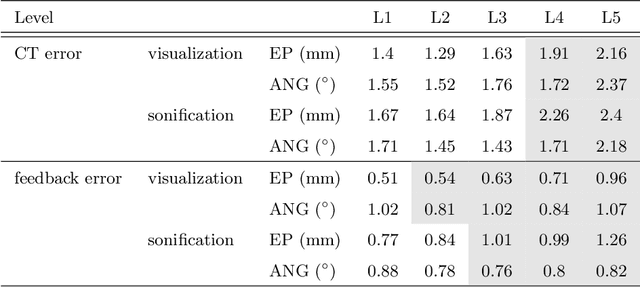
Abstract:Despite the undeniable advantages of image-guided surgical assistance systems in terms of accuracy, such systems have not yet fully met surgeons' needs or expectations regarding usability, time efficiency, and their integration into the surgical workflow. On the other hand, perceptual studies have shown that presenting independent but causally correlated information via multimodal feedback involving different sensory modalities can improve task performance. This article investigates an alternative method for computer-assisted surgical navigation, introduces a novel sonification methodology for navigated pedicle screw placement, and discusses advanced solutions based on multisensory feedback. The proposed method comprises a novel sonification solution for alignment tasks in four degrees of freedom based on frequency modulation (FM) synthesis. We compared the resulting accuracy and execution time of the proposed sonification method with visual navigation, which is currently considered the state of the art. We conducted a phantom study in which 17 surgeons executed the pedicle screw placement task in the lumbar spine, guided by either the proposed sonification-based or the traditional visual navigation method. The results demonstrated that the proposed method is as accurate as the state of the art while decreasing the surgeon's need to focus on visual navigation displays instead of the natural focus on surgical tools and targeted anatomy during task execution.
 Add to Chrome
Add to Chrome Add to Firefox
Add to Firefox Add to Edge
Add to Edge